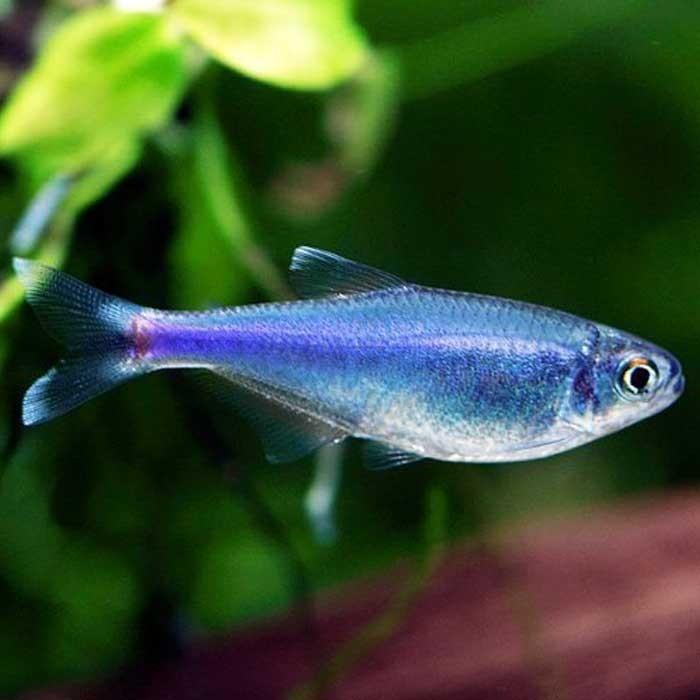
Cochu’s Blue Tetra
Characidae
The Cochu’s Blue Tetra is a popular aquarium fish known for its vibrant colors and Moderate of care. It belongs to the family Characidae and is native to the South America
Types of Cochu’s Blue Tetra Fish

Temperature
74-82°F (23-28°C)
Minimum Tanksize
20 gallons (75 liters)

Water type
1.005 - 1.010

Suitable PH
6.0 - 7.5

Native
South America

Size
1.5 inches (3.8 cm)

Life Span
4-6 years

Caring
Moderate
How to care Cochu’s Blue Tetra
Cochu’s Blue Tetra is a stunning species known for its striking blue coloration and small size, making it a sought-after addition to many aquariums. Its vivid blue body is often contrasted by a dark horizontal stripe running along its midsection, and the males tend to show more intense color than the females. These fish are peaceful and active, making them a great choice for community tanks.
Native to the freshwater rivers and streams in Brazil, particularly in the Rio Xingu and its tributaries, Cochu’s Blue Tetra thrives in slow-moving, clear waters with abundant vegetation. To recreate their natural habitat in an aquarium, it’s best to use a well-planted tank with soft, slightly acidic water. The addition of driftwood or rocks can provide hiding spots, helping these shy fish feel secure. They prefer gentle filtration and low to moderate water flow.
Cochu’s Blue Tetras are schooling fish and should be kept in groups of at least six individuals. In the wild, they live in large schools, so maintaining a group in captivity is essential for their well-being and reduces stress. A minimum tank size of 20 gallons (75 liters) is recommended for a school of Cochu’s Blue Tetras, as they require more space than smaller tetra species.
Being omnivorous, Cochu’s Blue Tetras eat a varied diet, which includes high-quality flakes, pellets, and occasional live or frozen foods like bloodworms, brine shrimp, and daphnia. Offering a balanced diet is crucial for maintaining their health and vibrant coloration. They may also nibble on algae and plant matter in the tank, so it’s helpful to include hardy plants that can withstand their grazing.
Cochu’s Blue Tetras prefer a water temperature range of 74-82°F (23-28°C) and slightly acidic to neutral water with a pH of 6.0 to 7.5. They thrive in soft water, with a general hardness range of 4-12 dGH. Regular water changes and proper filtration are essential for keeping the water quality high and the fish healthy.
This species is relatively easy to care for but does require stable water conditions. Cochu’s Blue Tetras are a bit more sensitive to water quality changes than some other tetras, so it is important to maintain consistent water parameters. They typically live for 4-6 years, and with the proper environment and diet, they can thrive in a peaceful community tank. Their attractive blue coloration and peaceful nature make them a wonderful addition to a variety of aquarium setups.
Cochu’s Blue Tetra is a fascinating aquarium fish that stands out with its vibrant colors. It belongs to the family Characidae and is native to the South America.
This species has a care level of Moderate and requires a minimum tank size of 20 gallons (75 liters). It typically reaches a size of 1.5 inches (3.8 cm).
Preferred water parameters include a specific gravity (sg) of 1.005 - 1.010, pH ranging from 6.0 - 7.5, and a temperature between 74-82°F (23-28°C). Additionally, maintaining water hardness within the range of 4-12 dGH is essential.
For stocking, the recommended ratio is 1:2-3 M:F. The Cochu’s Blue Tetra is widely available and has a diverse diet that includes Omnivorous; high-quality pellets, flakes, live/frozen foods.
With a life span of 4-6 years, this species is known for its very easy care requirements. It is an ideal choice for both beginner and experienced aquarists. Providing a well-maintained tank environment with suitable water conditions will ensure the health and vibrancy of this captivating species.
Do you have any questions about Cochu’s Blue Tetra Fish?
